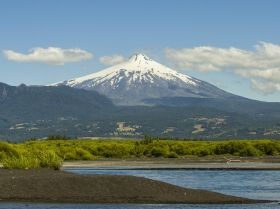Scientists from Stanford and Boise State University analyzed the infrasound detected by monitoring stations on the slopes of the Villarrica volcano in southern Chile, one of the most active volcanoes in the world. The distinctive sound emanates from the roiling of a lava lake inside a crater at the volcano’s peak and changes depending on the volcano’s activity.
The study, published Feb. 14 in the journal Geophysical Research Letters, demonstrated how changes in this sound signaled a sudden rise in the lake level, along with rapid up-and-down motions of the surging lake near the crater’s rim just ahead of a major eruption in 2015. Tracking infrasound in real time and integrating it with other data, such as seismic readings and gas emission, might help alert nearby residents and tourists that a volcano is about to blow its stack, the researchers said.
“Our results point to how infrasound could aid in forecasting volcanic eruptions,” said study co-author Leighton Watson, a graduate student in the lab of Eric Dunham, an associate professor in the Department of Geophysics of the Stanford School of Earth, Energy & Environmental Sciences and also a co-author. “Infrasound is potentially a key piece of information available to volcanologists to gauge the likelihood of an eruption hours or days ahead.”
Read more at Stanford’s School of Earth, Energy & Environmental Sciences
Image: Quimantu via Pixabay


